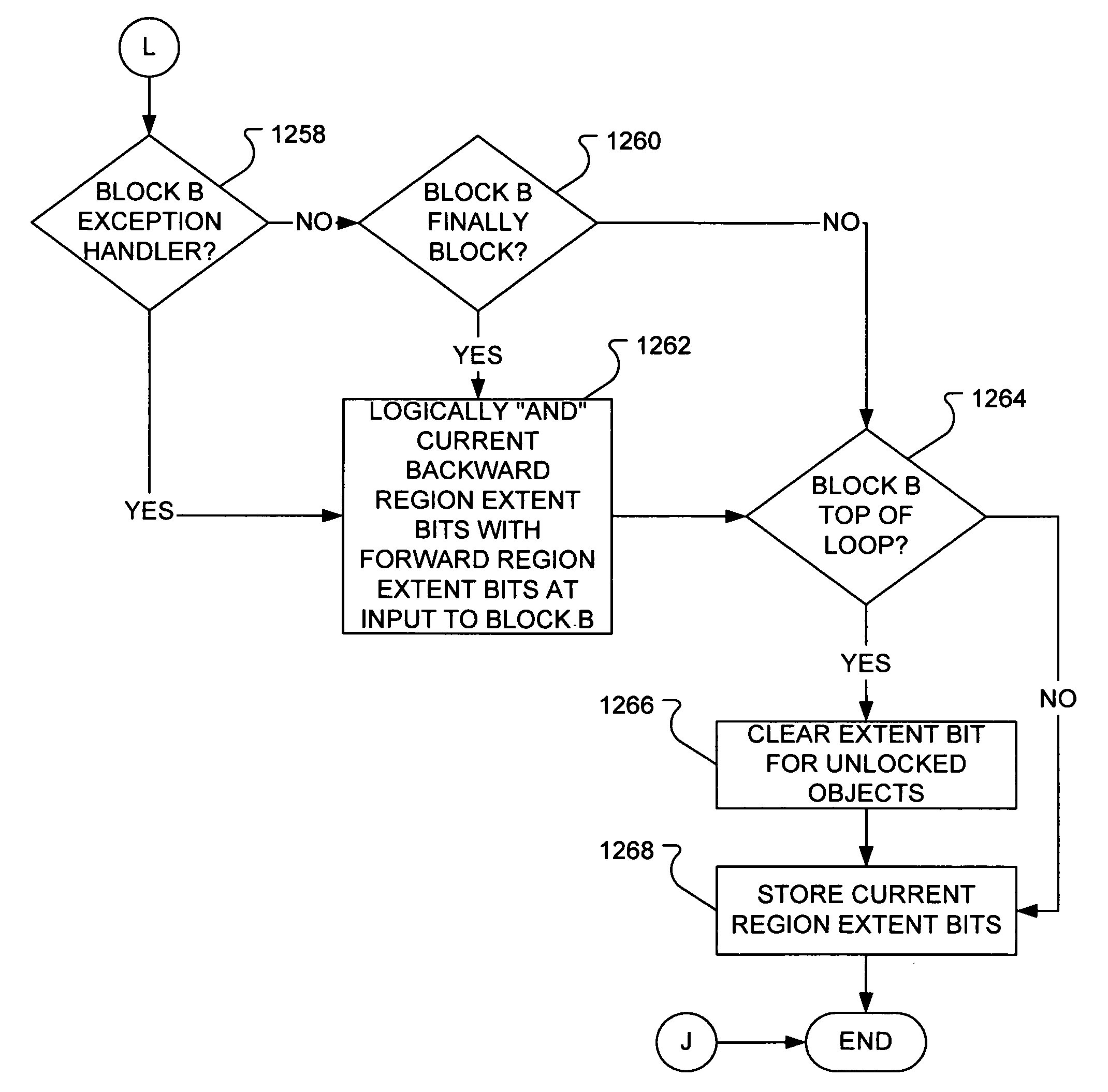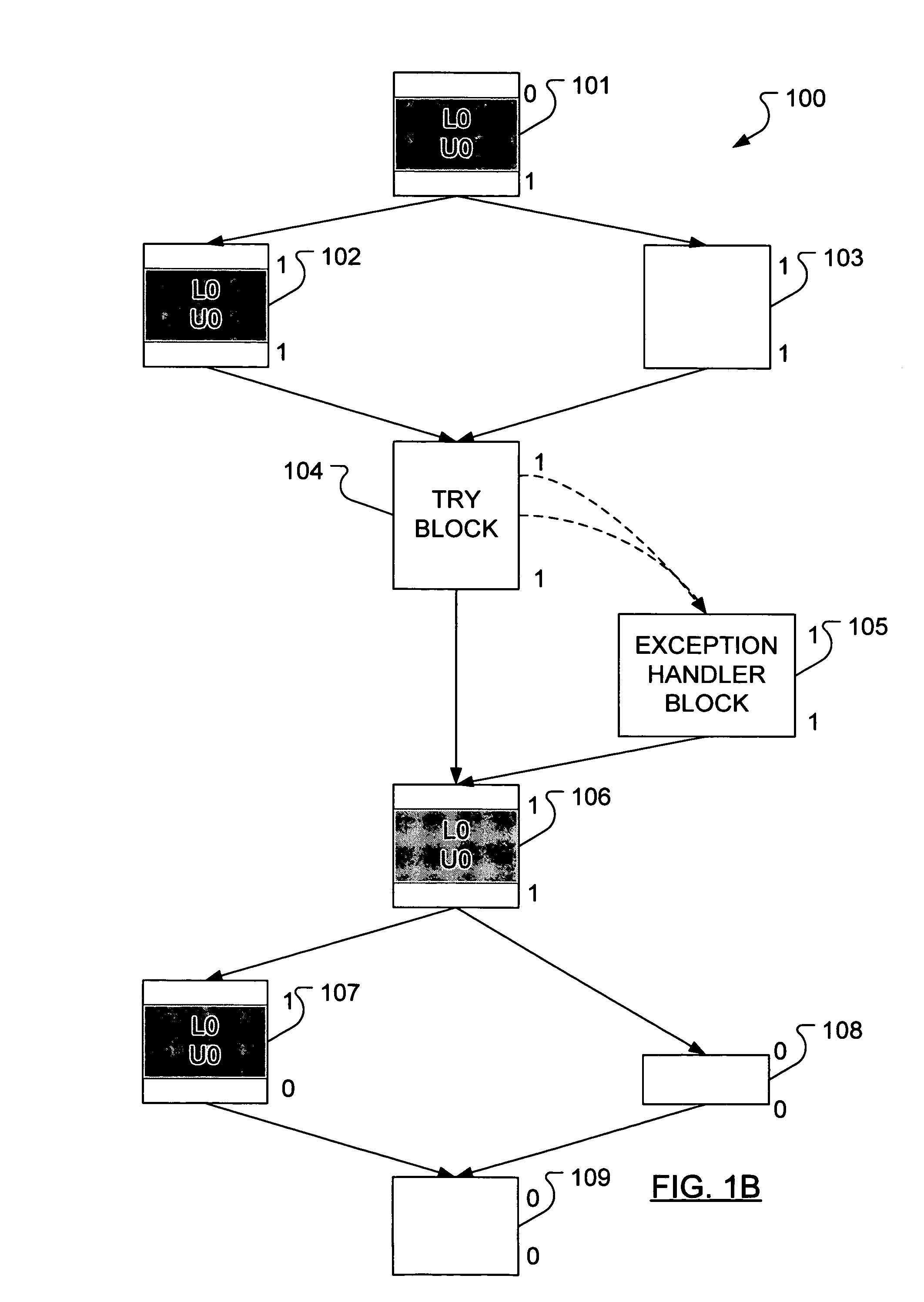Method for JIT compiler to optimize repetitive synchronization
a compiler and repetitive synchronization technology, applied in the field of compilers programming languages, can solve the problems of affecting the performance of the program, increasing the execution time of the program over the program using non-synchronized methods, and affecting the stability of the program, so as to reduce potential performance degradation, maintain the program correctness, and expand the range of operations over which the lock may be held
- Summary
- Abstract
- Description
- Claims
- Application Information
AI Technical Summary
Benefits of technology
Problems solved by technology
Method used
Image
Examples
Embodiment Construction
[0050]FIGS. 1A, 1B and 2 present an example of lock coarsening. In particular, FIG. 1 illustrates an exemplary control flow graph 100 of a method. Various regions of the method code are represented by blocks 101, 102, 103, 104, 105, 106, 107, 108 and 109 that are connected by flow edges. Synchronization placement is illustrated by darkened regions within the blocks as an object “0” is locked (L0) and unlocked (U0) in blocks 101, 102, 106 and 107. During execution, the object 0 may be locked up to four times, depending upon which path through the generic control flow graph 100 is taken.
[0051]In overview, aspects of the present invention are directed to considering said the flow graph 100 to collect information about each block. This information is then analyzed to determine a set of synchronization operations that may be removed. The program code is then modified based on the set of synchronization operations that may be removed, where the modifying includes inserting new synchroniza...
PUM
 Login to View More
Login to View More Abstract
Description
Claims
Application Information
 Login to View More
Login to View More - R&D
- Intellectual Property
- Life Sciences
- Materials
- Tech Scout
- Unparalleled Data Quality
- Higher Quality Content
- 60% Fewer Hallucinations
Browse by: Latest US Patents, China's latest patents, Technical Efficacy Thesaurus, Application Domain, Technology Topic, Popular Technical Reports.
© 2025 PatSnap. All rights reserved.Legal|Privacy policy|Modern Slavery Act Transparency Statement|Sitemap|About US| Contact US: help@patsnap.com



